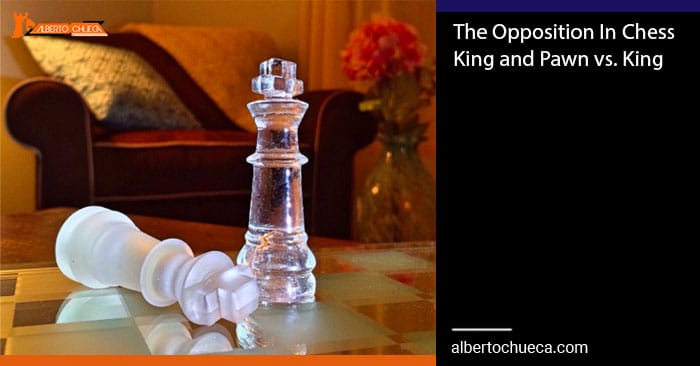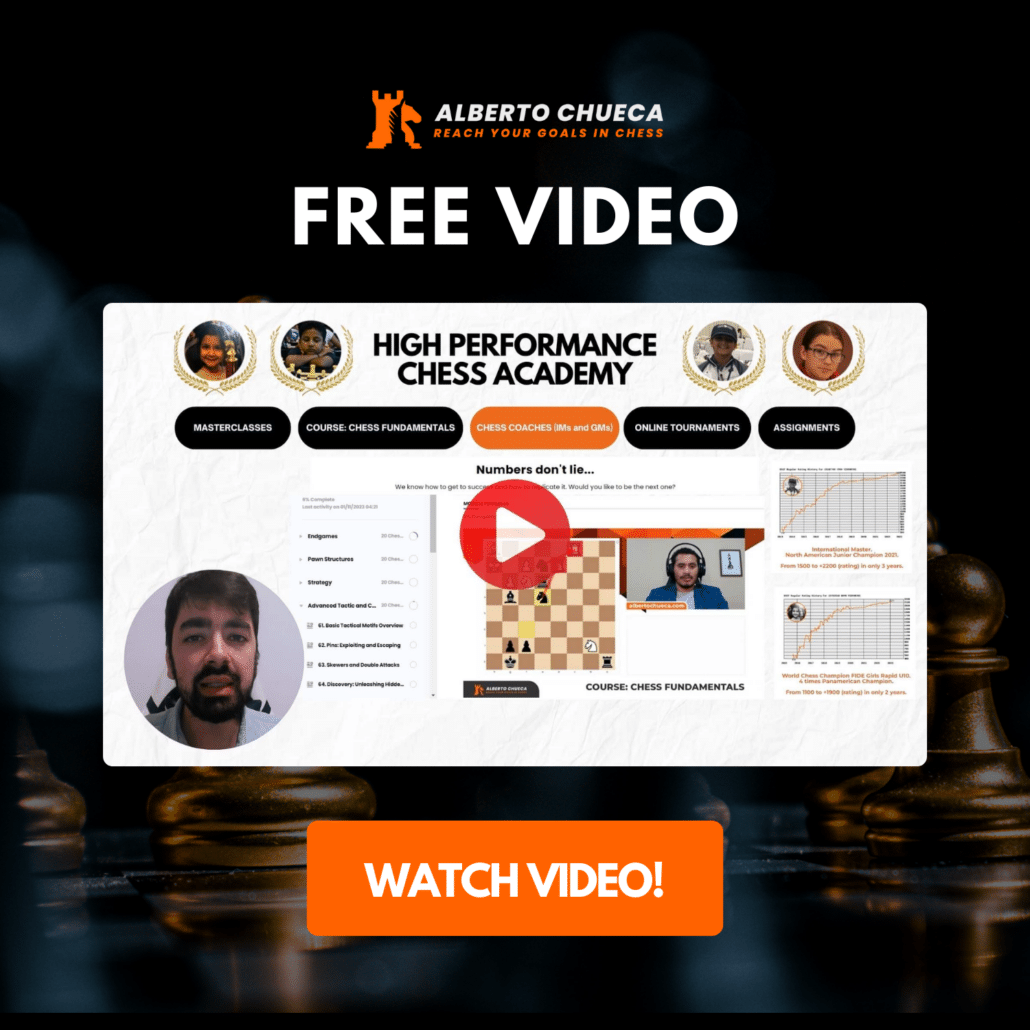Table of Contents
The Opposition in Chess
Many chess games go down to that final moment. For example, you played a hard-fought game, with a theoretical opening stage, smart planning by both sides, and some tactical shots by both players. The game transitions into the endgame. The player with the most knowledge and willpower will come out on top. In fact, several games come down to only a single King each, with only one pawn remaining for one side. Whether you can promote the pawn to a Queen is the difference between a win and a draw. Therefore, it's vital to know these endgames by heart. I present to you possibly the most critical endgame fundamental, the opposition in chess.
The Opposition in Chess – How does it work?
What is this “opposition” concept that is critical for us to remember for our own games? To better illustrate this idea, let me present to you a little challenge:
Now the King vs. King position above is drawn in real life. However, we leave Kings on the board for the purposes of demonstrating this challenge. The challenge for the above situation is White's King to walk all the way from the 1st rank to the 8th rank!
For novice chess players, this challenge may seem impossible with the Black King intruding White's path. However, there is a technique that White can use, as we have referred to is called opposition.
The first question we must ask ourselves it who should make the first move in the above diagram? It does matter! The irony of this challenge is that as White, we want Black (the opposing side) to make the first move in order to achieve our goal! How does that work? First, let's display the diagram again so that readers can easily access the position.
White's goal is to go forward with the King. The critical squares to control are d2, e2, and f2, the three squares right in front of the Kings. Therefore, when Black moves their King to d3, they give up the f2 square. And when Black's King goes to f3, White invades d2. And if Black moves backward, White moves forward (example: Ke4 by Black, Ke2 by White). This state of forcing Black's King to move, surrendering a square is what we call the opposition in chess.
Let's try it out!
See the idea? White will use this technique to advance all the way to the other side of the board! To clarify, let's see this in practice. Feel free to set up a real board and make the moves if it helps. The moves that we will play are 1… Kd3 2. Kf2, Ke4 2. Ke2, and we get the same situation, however, the Kings are advanced further!
Again, Black will have to cede a square, and White will pounce on it. For example, 2... Kd4 3. Kf3, Ke5 4. Ke3, Kd5 5. Kf4 Ke6 6. Kf4, etc. We keep advancing with our King taking advantage of Black's obligation to move when the Kings are lined up. Eventually, White will run into the final hurdle:
Yes, we did skip some moves, however, the position is not hard to reach with the technique we used earlier. Once again, Black is to move, and he will have to play Kd8, in which White goes Kf7, and Black cannot stop White from accessing the 8th rank. We finished the challenge!
Being on the defensive
Now we know how to potentially win if our King if we have the opposition in chess. What if we are trying to defend White from reaching the 8th rank. Is it possible? Absolutely!
As we see in the diagram above, even though the position is White to move, he cannot make any progress! This is because if the King moves to f1, Black follows him with Kf3. Also, if White tries Kd1, there is nothing to be done about Kd3. White cannot make any progress if he is to move because Black simply follows him around. As a result, White fails the challenge if he is to move.
Opposition in a real-game situation
The examples we looked at were not real game examples, because as we know, King and King draws in real life. It was simply a fun challenge. Let's take a look at how the opposition in our chess games can affect our games in real life.
We have a similar situation above, though the differences between that and the previous challenges are that 1) The King's are advanced further (though the technique is still the same), and 2) There is a White pawn on the board! How do we use opposition in this type of situation?
Just like the challenges we worked earlier, White needs to bring his King up to support the pawn, make a Queen, and win the game. Of course, if White mindlessly pushes the pawn forward, Black will have an easier time managing and taking the pawn from our hands. Therefore, we use opposition to achieve our desired results. And remember, Black needs to move first for White to win!
Black will be obligated to move 1… Kd6 (of course, Kf6 allows Kd5), ceding the f5-square. After 2. Kf5, Ke7 3. Ke5, we still achieve the same opposition position! The game can continue 3… Kd7 4. Kf6 Ke8 5. Ke6 Kd8.
Now, White can safely push his pawn and still maintain opposition. The game will continue 5. e4, Ke8 6. e5, Kd8 7. Kf7
The White King now controls all of the necessary squares for White to Queen his pawn and win the game.
How to defend using the opposition in chess
We looked at how to win on offense when we have an extra pawn and our opponents are at our mercy with just their lone King. Let's flip the switch and talk about how to defend with a lone King against a King and a pawn trying to Queen and win the game.
Do you remember when we looked at the position below with Black (the defending side) to move? Black can draw the position using the “copycat” defensive technique we displayed earlier.
Wherever White goes, Black copies him! Kf4 runs into Kf6, likewise, Kd4 runs into Kd6. Note that White cannot hope to win by pushing his pawn next to or in front of his King, because of a stalemate trick we will look at.
Let's quickly follow a hypothetical game. If White plays, for instance, 1. Kf4, Kf6 2. e4, Ke6 (to stay within reach of the pawn) After 3. e5, Black has a cool trick which gains him the opposition.
Black can play the very cool 3… Ke7!, and White's only move to make progress is 4. Kf5, and Black gains the opposition after 4… Kf6.
The Stalemate
We understand that being on the defensive, having the opposition in chess is critical, how do we know the game is actually a draw? Let's look at the position we just talked about and play out the moves.
We know the drill. White plays 1. e6+, Ke7 2. Ke5, Ke8! That same defensive technique, where if White tries to make progress, Black gains the opposition. For example, 3. Kd6, Kd8 4. e7+, Ke8 we reach the famous stalemate position.
White has to protect the pawn on e7, though his only move to do so, 5. Ke6 results in a stalemate! As a result, the players shake hands and agree to a draw.
To sum up, King and pawn vs. King can be as easily winning as it is drawn. Consequently, it's very important to know these endgames by heart, so that we don't mess these up when we reach the endgame in real games.










